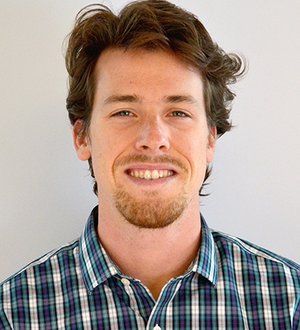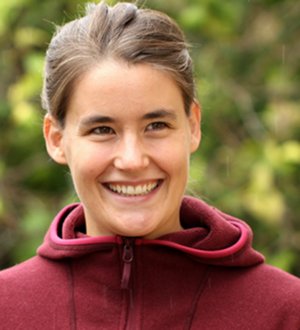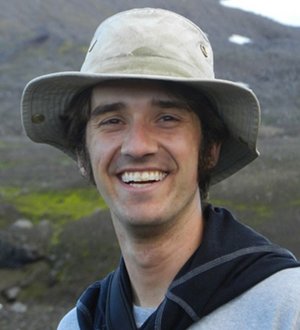The MPI-M as a host for postdoctoral fellows
In the following we asked four of our Postdoctoral Fellows who have been here over the last two years, are here at the moment, or are going to come next year, why they chose MPI-M to do their research in Hamburg and what their scientific plans are.
James Ruppert, USA

1.1.16-31.8.18 – Department “The Atmosphere in the Earth System” (AES), Precipitating Convection group (Cathy Hohenegger)
Fellowships by Alexander von Humboldt Foundation and National Science Foundation Atmospheric and Geospace Sciences
“As an American, in fitting with American stereotypes, MPI-M seemed extremely far to me, and I mean this in two ways. I would describe my training in university as meteorology, with a heavy focus on weather. As I learned more about Cathy Hohenegger's Clouds and Convection group, the group that was most exciting to me and matching with my research interests, it became clear that coming to MPI-M would push me in a new direction. This group often takes an idealized approach in research that seems as much like physics at times as meteorology. This approach was especially exciting to me.
Beginning from my PhD work, I've had a special fascination with how the existence of the diurnal (24-hour) cycle impacts the climate at longer time scales. Would we experience the same global rainfall amount, or have the same cloud cover, if solar forcing was roughly constant instead of varying so greatly between night and day? While this question proved trickier to address than I anticipated, the exploration so far has taken me down an unforeseen road. By simulating the ITCZ, tropical cyclones, and clouds across the global tropics I found a surprising systematic pattern whereby the diurnal peaks in rainfall and high clouds are displaced by 12 h. We would ordinarily expect these peaks to coincide very closely. The literature revealed that this pattern indeed exists in nature, yet without an explanation. We found a unique mechanism through which solar radiation directly excites these high clouds. I did not anticipate this research direction or result, although it was one that I am now very excited about.
I hope and anticipate that the collaborations I have begun during my time at MPI-M will continue long into my career. The distance between the US and Hamburg now feels much smaller. I have just begun a position at Pennsylvania State University as an Assistant Research Professor, where I will be investigating the impacts of cloud-radiation feedback on the formation of tropical cyclones.”
Nicola Maher, Australia

1.2.17-31.1.19 - Department “The Ocean in the Earth System” (OES), Director’s group (Jochem Marotzke)
Humboldt Research Fellowship
“MPI-M is one of the best climate modeling centers in the world, a great place to do research. Hamburg also seemed like a nice city to live in.”
Nicola Maher wrote her doctoral thesis "Natural Drivers of Interannual to Decadal Variations in Surface Climate" at the University of New South Wales, Australia. She is interested in how external forcing can excite modes of internal variability in the climate system. Maher: "While previous work has investigated this question, it remains unclear how interannual and decadal modes of variability may be influenced by such forcing. The work that I will carry out during my time at MPI-M aims to address this question by undertaking a systematic study of the role of external drivers such as volcanic eruptions and anthropogenic greenhouse gas and aerosols in changing the characteristics of multiple modes of variability in climate models, particularly the MPI-ESM-LR model. My main research interest is how modes of climate variability might change in the future. I am currently working on specifically how the El Niño Southern Oscillation might change in the future.”
Maria Rugenstein, Switzerland

1.1.19-31.12.20 - AES and OES, Director’s groups (Bjorn Stevens and Jochem Marotzke) Humboldt Research Fellowship
“Since I spent a year at the Geophysical Fluid Dynamics Laboratory in Princeton during my Masters, I have planned to return to a climate modeling center, because I really like having so many experts on every component of the model in one place and also get a better understanding of the more technical aspects of climate modeling at the side. Jochem and Bjorn pointed me to the Humboldt funding, which I didn’t know before — I guess that’s the reason I’ll be in Hamburg and not at NCAR. I’m floating between the ocean and atmospheric departments, as I study the surface between the two (which is also part of the reason for me to come to MPI-M as there are few places which have strong research in these two components at the same time).
My hypothesis is that direct and indirect effects of ocean heat uptake onto surface temperatures are related. In other words: The phases of anomalous ocean heat uptake or release (the direct effect) are the same phases in which the SST pattern has a strong influence on modulating radiative feedbacks (the indirect effect). The challenge is to understand how coupled model set SST patterns and whether these patterns are the same as in the real world. Another way of phrasing the problem would be: Which ingredients should a "minimal ocean model" have to project large-scale atmospheric temperatures on decadal to centennial time scales?”
Jeremy Caves Rugenstein, Switzerland

1.4.19-31.3.21 – Department “The Land in the Earth System” (LES), Director’s group (Martin Claussen)
Humboldt Research Fellowship
“I'm trained as a geologist, and my interests lie in understanding how the Earth's climate has changed in the past. When my wife Maria Rugenstein received a fellowship to work at MPI-M, I thought this would be the perfect opportunity to merge my interests in geology with my interests in climate. Because I work primarily in the terrestrial realm, I was excited to have the opportunity to understand how the land surface modifies the proxy systems that we use to probe deep-time paleo climate. Working at MPI-M permits me to pursue this interest with the experts in understanding the coupling between the land surface and climate.
My primary interest is in understanding how the hydrological cycle has changed in Earth's distant past, when both atmospheric CO2 was different than today and when the land surface may have also been different. Unfortunately, proxy reconstructions of deep-time hydrologic change are often not quantitative and poorly interpreted, leading to confusion about how the hydrological cycle responds to changes in atmospheric CO2 and how these changes both manifest themselves across the Earth system and how they may either buffer or accentuate carbon cycle perturbations. My goal is to place quantitative constraints on the hydrologic response through a combination of land surface sensitivity experiments and data-model comparisons. My Humboldt funding is joined between MPI-M and the Senckenberg Institute in Frankfurt, where I will be conducting much of the laboratory work needed for the data part of my project.”
MPI-M cordially welcomes its PostDoc fellows and wishes them a successful und inspiring time in our research environment. We encourage other early-career scientists to apply for funding and come to MPI-M.
Contact
Dr. Annette Kirk
Max Planck Institute for Meteorology
Communications
Phone: +49 (0) 40 41173 374
Email: annette.kirk@mpimet.mpg.de
Christina Rieckers
Max Planck Institute for Meteorology
International Office
Phone: +49 (0) 40 41173 159
Email: christina.rieckers@mpimet.mpg.de

